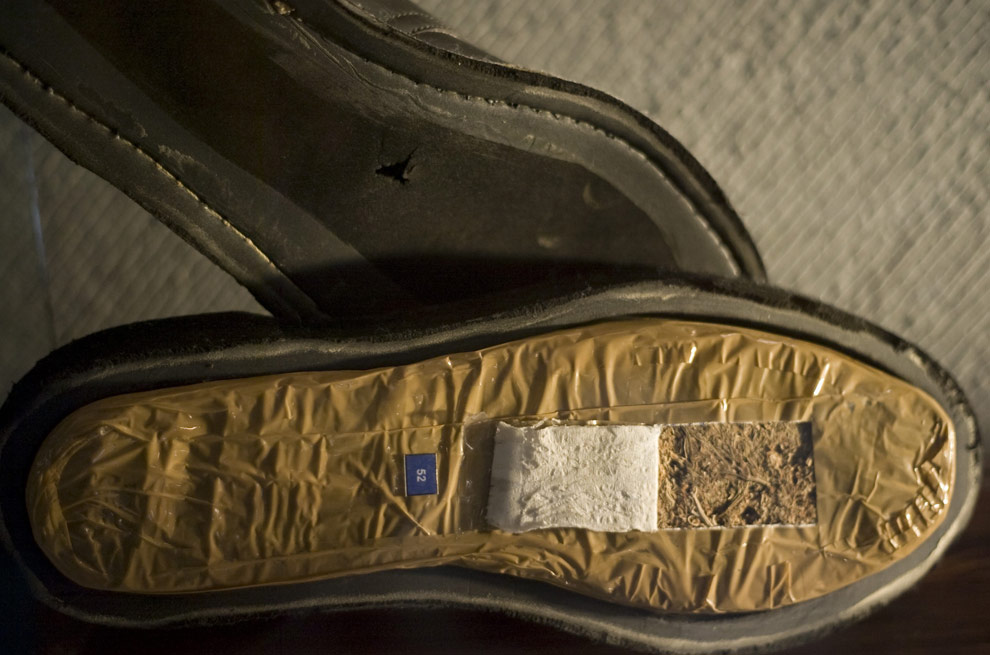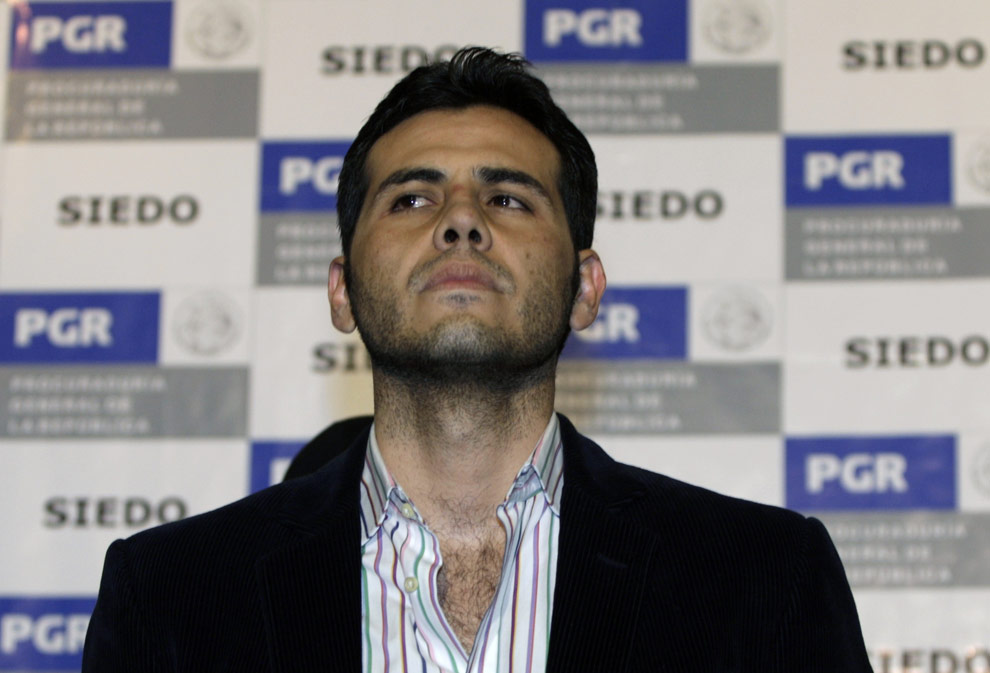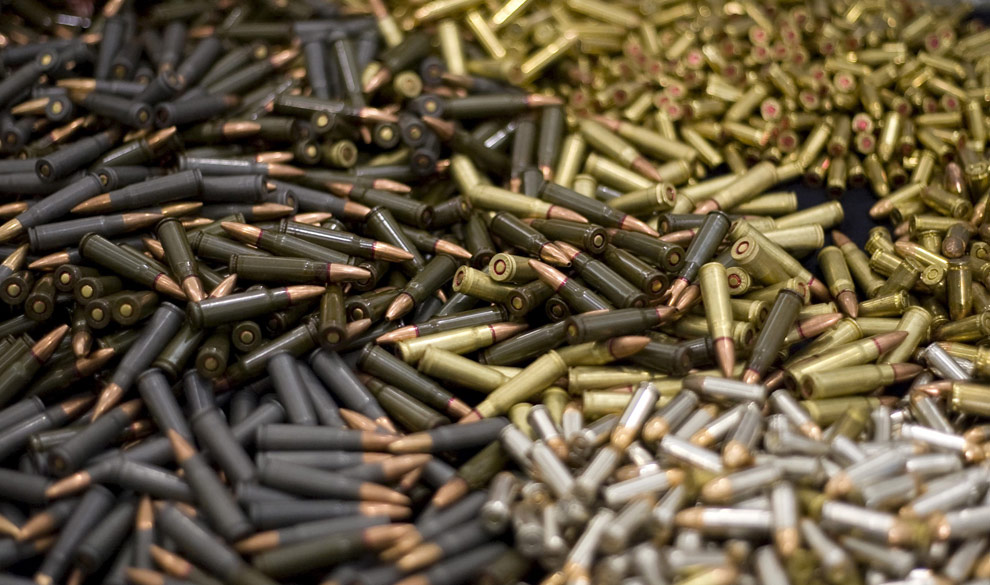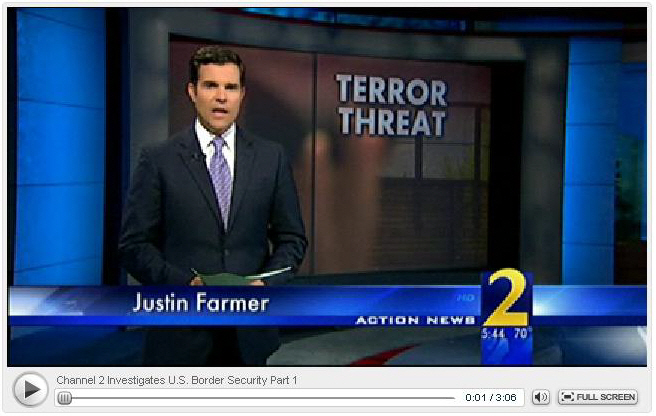By Mike Sparks
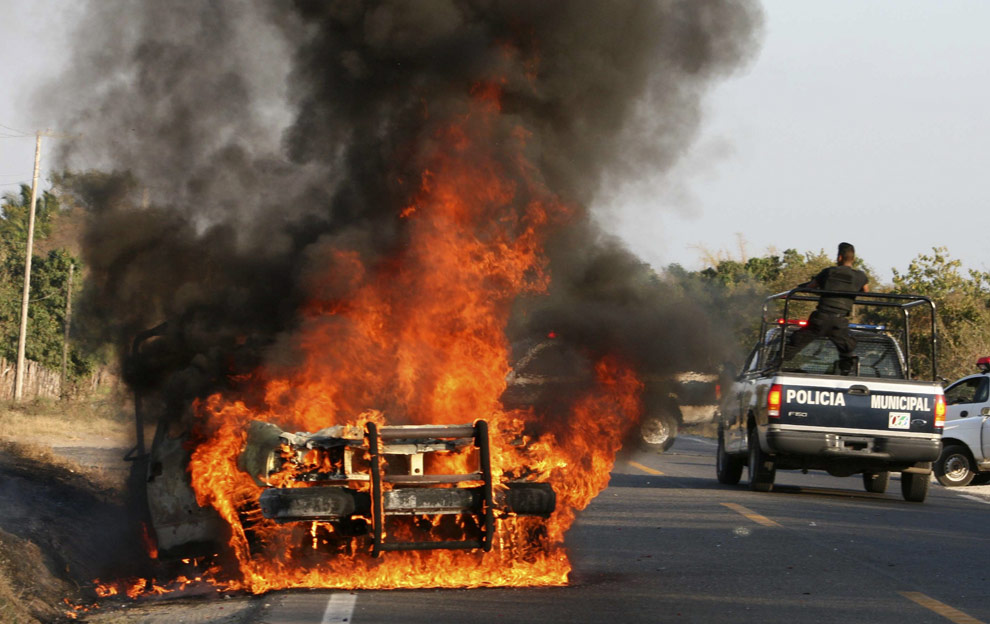
PLAN A: Call-Up the National Guard NOW
One hundred years ago, in our non-politically correct world, that question would get a resounding "yes!" from every American. Today this would be seen as a conservative ploy to increase military spending or a liberal ploy to put more of the day-to-day jobs of the people in the hands of the government. But the truth is it is a change of policy needed...and one that would benefit all involved before there is a devastating terrorist 9/11 type False Flag attack wiping out millions of Americans.
 www.youtube.com/watch?v=1NDvpZErg-Q
www.youtube.com/watch?v=1NDvpZErg-Q
The state governors of California, New Mexico, Arizona and Texas should immediately mobilize all their National Guard units and seal off our southern land border areas and hold this as an Israeli-style sensor-security fence is erected.
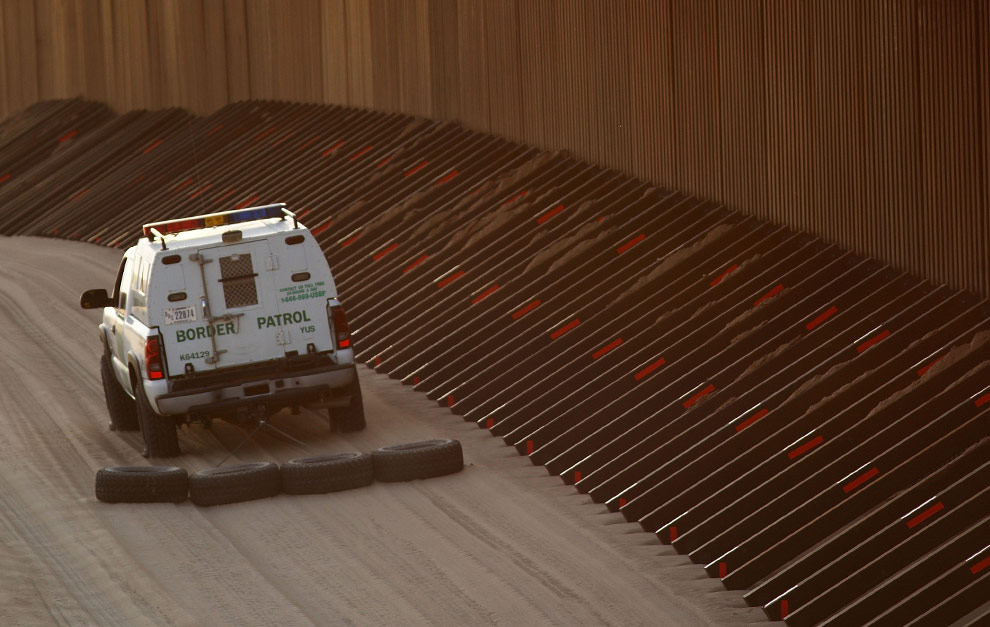

Or would fighter-bomber strikes on Mexico City killing innocent civilians be more down DoD's alley?
Our source reports:
 Video 1: www.wsbtv.com/video/23438021/index.html
Video 1: www.wsbtv.com/video/23438021/index.html
 Video 2: www.wsbtv.com/video/23438712/index.html
Video 2: www.wsbtv.com/video/23438712/index.html
Since 1997, the XXXX has surveillenced directly the continued invasion of the Arizona-Mexican border by Mexican military units.The Arizona XXXX unit has monitored no less that 129 separate and unauthorized incursions deep into the U.S. by Mexican military forces.
Further investigation proved that senior supervisors within the invaded area of responsibility of the Customs Service and Border Patrol were paid agents of the Mexican secret services and aiding the smuggling and incursions. After evidence was supplied to senior policy makers within the U.S. government and repeatedly ignored it was estimated the traitorous cell extended upward into the U.S. government. Consequently, additional measures were needed to nudge media, congressional, and law enforcement attention on the area.
According to the intell collected by the XXXX, the Mexican Army at the behest of the Mexican government conducted operational security, convoy protection and feint attacks in support of illegal alien, narcotic, and arms smuggling between 1994 to the present.
By 1998, analysis of this intelligence showed that the incursions were being conducted at the direction of Mexico's National Secret Service (MNSS) to provided direct support of large narcotic and armament supplies to syndicates within Arizona.
The support was always aggressive. Once the XXXX managed to expose the BP sector's traitors and have them transfered or removed, the BP direct surveillence of the smuggling routes increased in support of our activities. Consequently, no less than 56 fire engagements by the Mexican Army with Border Patrol sections have happened in the intervening period.
The heightened activity and attention allowed for political mobilization in Congress. For four years a Congressional sponsor was sought but none wished to come forward. Apparently, Mexico's reach is high indeed. Eventually other organizations managed to get Colorado Congressman Tancredo's sponsorship. With this backing the break up of this Mexican operation began in earnest. In typical Mexican machismo tradition, rather than end this covert action for reasons of plausible deniability, Mexico continued even more aggressive subversion.
Particular attention was paid by MNSS to the XXXX's reconnaisence operations and following an attempted murder of our sector chief in 2000, reprisal was made silencing the Mexican Secret Services chief coordinator in the region. This in turn forced a quick escalation and intervention by MNSS who now sought to actively assassinate BP supervisors, DEA officers, FBI special agents, and immigration reform lobyyists who were getting to close to their activities.
Escalation followed escalation and soon senior members of the FBI's National Security Division, Organized Crime Burea, and other Intelligence Community assets were involved.
Their activities followed up the investigation with the high level penetration of the Juarez and Tijuana cartels and the discovery of the Mexican National Secret Services burial grounds outside of El Paso in summer 2000. Over 200 bodies have been recovered from the area. All in all, it only remained to force the unwilling law enforcement and political leaders into seeing the Mexican government's direct involvement.
Major Torres of the Mexican Army has been the chief conduit of arms and drugs smuggling into the Mexican government's guerrilla units in the U.S. in this area. When not directly involved, criminal syndicates in the Juarez and Sinoloa cartels were used. This was done at the connivance and sponsorship of the MNSS through the Mexican Governor's Offices of Sinoloa and Sonora, Mexican Consulates in Arizona, and with support within the Republican Party of Arizona including it's infamous Phoenix 40 Business Establishment. Thus, it was his superiors that the XXXX were after in addition to the Mexican guerrilla units and their American traitors. However, the political conditions were insufficient to capture him in 1999.
Once President Bush gained office, much of the official government assets were withdrawn. President Bush has direct family assets involved in the border region and tremendous political capital vested with the Fox Administration. In my opinion, he believes, anything which might tarnish this had to be handed with kid gloves. Thus, it became clear that the tenuous communications between the non-official cover units and official government reps had to be severed if the operation wasn't to be manipulated by the White House. This made Congressional support all the more key. Furthermore, it meant strengthening the covert relationship between BP field officers and APL members even more important.
Consequently, to integrate this support became an overriding objective. Knowing the aggressive actions of the Mexican army units, loyal BP sector supervisors aided by XXXX intelligence started placing small BP units without higher up authorization directly onto the paths of the known Mexican Army drug routes. More importantly, the break up of illegal alien smuggling rings related to the Mexican secret cell were necessitated through quiet means which didn't have XXXX written on it. It was expected the combination would be enough to warrent Congressional investigation.
Between 1999-2001, a major illegal smuggling operation was broken up in Phoenix. This success was mailed to you at the time. It included the arrests of a number of American citizens even government personnel who aided and abeted the operation which extended from Phoenix all the way to Washington DC. As a result of the exposure, officials at the top who had previously turned a blind eye, were by virture of the political spotlight forced to clamp down heavily on the smuggling ring.
Typically, in reprisal, the Mexican National Secret Service arranged through it's cartel surrogates for the simulteneous assassination of the involved American officials including: The Maricopa County Sherriff, Arizona Chief Warden of Prisons, the Arizona Lt Governor, the Arizona Secretary of State, and involved personnel within the Govenor's office and Republican Party. With the support of XXXX intelligence within the prison system, the operation was discovered, presented to confidential informers of Law Enforcement and broken up before the teams could make their hits.
This blatant attack was too much even for the willing accomplices within the U.S. government. With MNSS chief coordinator already liquidated, the Mexican government's control of the Juarrez and Tijuana cartels began disintergrating. With the election of Fox, additional support for the involved personnel of the MNSS deteriorated.
Consequently political support for covert action against the MNSS was made. Fox quickly withdrew the key MNSS personnel and managed to throw a sop to America with liquidating one of the MNSS's National Security Division reps who was head of the Mexican Oil Cartel. This was unfortunate has it enabled American senior policy makers to say something had been done when the full scale of the Mexican covert campaign wasn't properly exposed. However, a number of victories by American Intelligence Community have been made against the Cartels.
Major Torres' operation continued. This for one reason. Since he was the APL's known suspect with proven direct involvement with individuals even with the Fox Administration, the XXXX had taken care to not release it's evidence against him. Rather, with Congressional attention and media attention now focused on the problem, and with the evidence already collected, once Torres was captured red handed, no media spin, government censorship, or treasonous activity could stop it's exposure.
Unfortunately, Tancredo's office has been more successfull at it's own investigation than the XXXX thought it would. Consequently, they managed to locate Torres' operation and have managed to engineer his capture before the XXXXX was ready. As a result, the full extent may never be known. In fact, it is likely the Major won't be alive much longer in any case. He knows too much. If that happens, there won't be much to do except destroy the next Mexican incursion. Thus, stay informed, blood will soon flow on the U.S.-Mexican border......

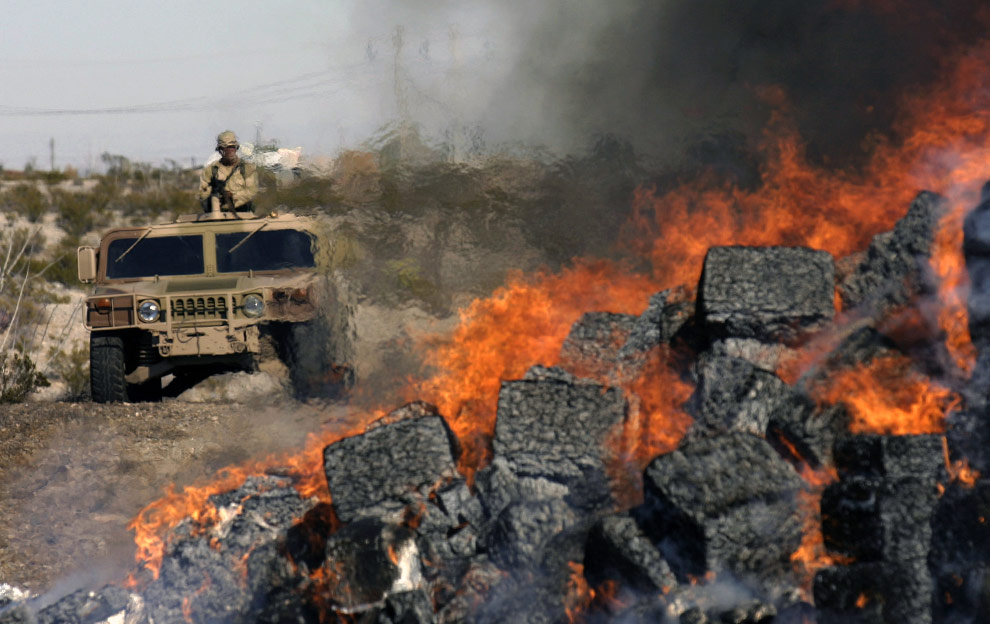
Mexican military drug running at border?
Federal officials convinced troops aiding smugglers
WorldNetDaily.com | Monday, July 1, 2002 |
By Terence P. JeffreyU.S. law-enforcement officers in the Southwest are convinced that Mexican military units are crossing the Arizona-Mexico border to aid smugglers in carrying drugs into the United States. In one incident, says a senior federal law-enforcement officer, a major in the Mexican army was caught at the U.S. port of entry at Naco, Ariz., carrying a detailed drug-smuggling map among his papers. The Mexican officer, said the official, was "coming into the United States and they found the drug-smuggling maps on him that showed all the drop points and trails" that local smugglers used for bringing narcotics into the United States.
The official said that in calendar year 2001, the U.S. government officially recorded 12 separate incidents in which Mexican military personnel crossed over the border into Arizona alone. On some occasions, a Border Patrol officer said, Border Patrol agents actually have arrested Mexican army personnel in U.S. territory.
"Without a doubt" Mexican military have made incursions into Arizona, said the Border Patrol official. "We have actually made arrests of both military and police. And as far as I know in all events the people were released to Mexican custody within 12 hours, as well as returning them with the weapons that they made the incursion with."
"We get slapped down"
When the Border Patrol in the region detains Mexican military personnel the event is placed on a special political track. "It definitely becomes an international situation where we need to make all the notifications all the way up the chain of command to Washington and to the State Department," said the Border Patrol official. "Once we make the arrest we hand it over to Washington to handle. People from our office will return them back over to Mexico, but that is not really done by the Border Patrol officers without direction from Washington."
Another source said that because federal officials in Washington want to downplay the fact that the incursions are being made by Mexican military the incidents are logged as "military/police" incursions. Law-enforcement officials in the field are convinced the intruders are Mexican military because they dress in fatigues, act like trained military personnel and frequently drive Humvees, a vehicle used by the Mexican military. This, however, does not necessarily persuade officials in Washington. "We know that they are Mexican military," said the senior law-enforcement officer. "But officially we are not allowed to say that because every time we say that we get slapped down." "We look at the Humvees that cross the border as a military vehicle," said the officer. "When we bring up these incidents they're saying in Washington, 'Yeah, maybe they were originally military vehicles but maybe the police have them or maybe the drug cartels have them. You can't guarantee that it was the military.'" "Other elements of the government want to minimize the whole cross-border stuff," said the official. "It's highly political because of the current status between our governments and the agreements they've made. This doesn't fit in."
"We are out in the field," he said. "We are on the ground, and we know what is going on." The Border Patrol official confirmed that agents in the field believe the Mexican military incursions are often, but not always, connected to drug smuggling. "I know it has happened in the past that Mexican military have been apprehended in the same areas and locations that narcotics are present."
"That is what has happened in the past," he said. "We don't want to narrow it down to every time. It's just that in a significant number of situations it has been found that that is the case." On the other hand, this official said, "Often it has been found through interviews that they entered the United States accidentally because they did not know where the line was."
"It has been reported by Border Patrol agents that Mexican military vehicles have been seen with narcotics in them," the Border Patrol official said. "The ones that I am aware of have occurred right on the border with the Mexican military still on the south side. Now, when called upon and questioned it was relayed by their personnel that they had made the seizure already and were planning on just doing whatever they do with it."
"It's quite possible that they were legitimate," he said. Border Patrol agents and officers working for other federal law-enforcement agencies, however, believe that some of the Mexican military seen frequenting the Arizona border, and making incursions into U.S. territory, are reconnoitering for and protecting drug smugglers and, in some circumstances, carrying the drugs across the border themselves.
A Border Patrol official described one incident in which Mexican military personnel were detected and "seen fleeing south before we were able to make the arrests." When officers investigated the place from which they had fled "narcotics turned up in the area."
So far, the official says, because of this kind of flight, U.S. authorities have not been able to capture Mexican military personnel inside the U.S. while in actual physical possession of narcotics.
"I don't think they want to surrender with narcotics in their truck and that is why it unfolds the way it does," he said. Law-enforcement officials monitoring the Arizona border are also greatly concerned about the intensity and sophistication of the surveillance that drug cartels do in the region. "It is an extremely common event where we'll catch drug smugglers with handheld radios, night vision equipment, different maps," said one official. "There is counter-intelligence and counter-counter-intelligence where we are monitoring them monitoring us."
Another official said that they have captured encrypted portable radios from the drug smugglers. U.S. authorities have been able to use these captured encrypted radios to intercept and monitor the smugglers' communications.
In Texas, where military units provided surveillance support for border-security personnel, drug cartel counter-surveillance people monitored the military bases to see when the U.S. personnel were leaving the base to start their surveillance.
In Arizona, drug cartel counter-surveillance people got to know the routines and habits of some U.S. border-security personnel so well that they gave them code names.
In Nogales, Ariz., said an official, an undercover Border Patrol officer, working with local police, discovered that a drug-smuggling ring had placed agents posing as gardeners on the city streets. "They witnessed an individual," he said, "who poses as a landscaper who watches Border Patrol agents and other law-enforcement vehicles driving down the roads and then gets on his radio and calls and says, 'Hold up on your load. A Border Patrol agent just drove down. He is coming through your area.'" Another law-enforcement officer referred to a site in Coronado National Monument as "smugglers' ridge." The monument sits right on the border, with the top of the ridge in U.S. territory and the south side of the mountain in Mexico. On that ridge, he says, law-enforcement authorities have "identified 27 different counter-surveillance locations in which people working for the smugglers will spend days observing everything that goes on in the park."
At the bottom of the mountain on the north side is a residence for park rangers. "When the ranger leaves his house, they will report that he left the house and he got in his patrol vehicle, and what road he is driving down."
"If the ranger stops and gets out of his car," he says, "they will report whether he got out with a rifle or without a rifle."
"On specific occasions," he said, "we have had up to 18 Mexican counter-surveillance people in the park at one time. We have seen them within 50 feet of the house. Once when a ranger responded to a sensor hit, one of the counter-surveillance people recorded that the ranger was putting on his pants to respond. In other words, he was looking through the window." This official described an incident when a ranger stopped two men in a truck because the driver was speeding.
"He found 400 pounds of marijuana in the back of the truck," said the official. "He arrests them, sits them down. There is a radio squawking. He is very fluent in Spanish, so he listens. What the voices on the radio are describing is the actual stop of the vehicle he had just made, where the vehicle is currently parked, what happened to the two people who are handcuffed, where they are sitting, and a description of the ranger."
At times, a special Arizona Army National Guard unit supports federal law-enforcement agents patrolling the Arizona border in the effort to stop drug smugglers and illegal aliens. The National Guard unit, whose members call themselves the Nighthawks, uses special night-vision devices to detect smugglers after dark. They provide the U.S. agents with real-time intelligence on how many intruders have crossed the border and which way they are heading.
They also look out for snipers.
But after Sept. 11, officials say, the National Guard was forced to refocus its resources at official ports of entry, minimizing its presence in the more remote areas where the military incursions and the bulk of the smuggling take place.
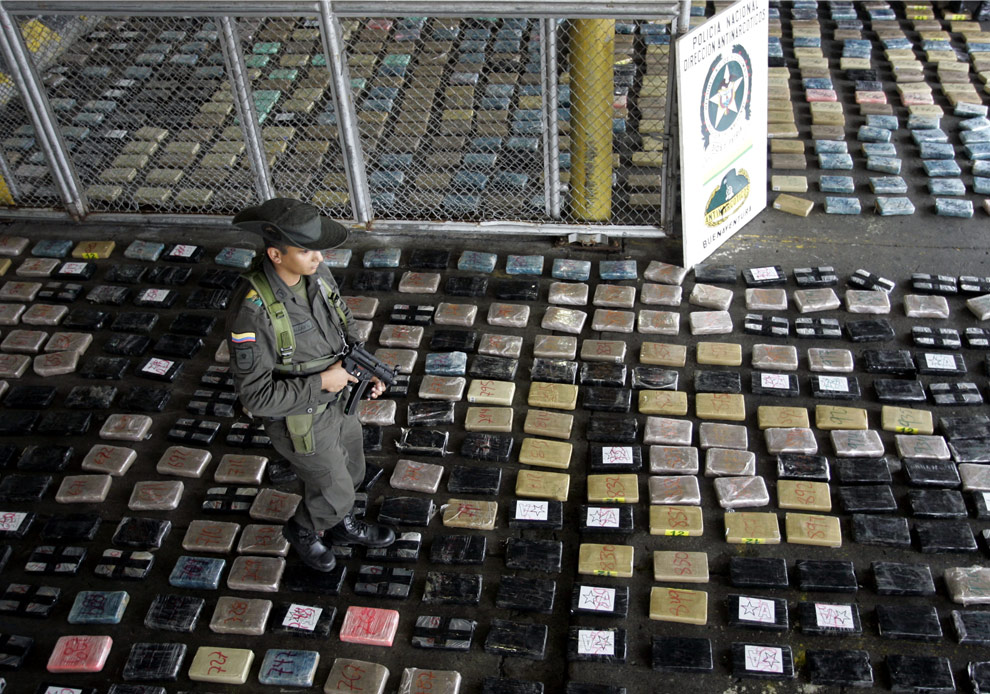

The Technology Secrets of Cocaine Inc.
By: Paul Kaihla
Issue: July 2002Colombian cartels have spent billions of dollars to build one of the world's most sophisticated IT infrastructures. It's helping them smuggle more dope than ever before.
On a rainy night eight years ago in the Colombian city of Cali, crack counter-narcotics troops swarmed over the first floor of a low-rise condominium complex in an upscale neighborhood. They found no drugs or guns. But what they did find sent shudders through law enforcement and intelligence circles around the world.
The building was owned by a front man for Cali cocaine cartel leader José Santacruz Londono. Inside was a computer center, manned in shifts around the clock by four to six technicians. The central feature of the facility was a $1.5 million IBM AS400 mainframe, the kind once used by banks, networked with half a dozen terminals and monitors. The next day, Colombia's attorney general secretly granted permission for U.S. agents to fly the mainframe immediately back to the United States, where it was subjected to an exhaustive analysis by experts from the Drug Enforcement Administration and various intelligence agencies. The so-called Santacruz computer was never returned to Colombian authorities, and the DEA's report about it is highly classified. But Business 2.0 has ferreted out many of its details. They make it clear why the U.S. government wants the Santacruz case kept quiet.
According to former and current DEA, military, and State Department officials, the cartel had assembled a database that contained both the office and residential telephone numbers of U.S. diplomats and agents based in Colombia, along with the entire call log for the phone company in Cali, which was leaked by employees of the utility. The mainframe was loaded with custom-written data-mining software. It cross-referenced the Cali phone exchange's traffic with the phone numbers of American personnel and Colombian intelligence and law enforcement officials. The computer was essentially conducting a perpetual internal mole-hunt of the cartel's organizational chart. "They could correlate phone numbers, personalities, locations -- any way you want to cut it," says the former director of a law enforcement agency. "Santacruz could see if any of his lieutenants were spilling the beans."

They were. A top Colombian narcotics security adviser says the system fingered at least a dozen informants -- and that they were swiftly assassinated by the cartel. A high-level DEA official would go only this far: "It is very reasonable to assume that people were killed as a result of this capability. Potential sources of information were compromised by the system."

The discovery of the Santacruz computer gave law enforcement officials a chilling glimpse into the cartels' rapidly evolving technological sophistication. But here's what is truly frightening: Since the discovery of the Santacruz system in 1994, the cartels' technological mastery has only grown. And it is enabling them to smuggle more dope than ever before.
The drug lords have deployed advanced communications encryption technologies that, law enforcement officials concede, are all but unbreakable. They use the Web to camouflage the movement of dirty money. They track the radar sweeps of drug surveillance planes to map out gaps in coverage. They even use a fleet of submarines, mini-subs, and semisubmersibles to ferry drugs -- sometimes, ingeniously, to larger ships hauling cargoes of hazardous waste, in which the insulated bales of cocaine are stashed. "Those ships never get a close inspection, no matter what country you're in," says John Hensley, former head of enforcement for the U.S. Customs Service. Most of the cartels' technology is American-made; many of the experts who run it are American-trained. High- tech has become the drug lords' most effective counter-weapon in the war on drugs -- and is a major reason that cocaine shipments to the United States from Colombia hit an estimated 450 tons last year, almost twice the level of 1998, according to the Colombian navy.
In a sense, the cartels are putting their own dark twist on the same productivity-enhancing strategies that other multinational businesses have seized on in the Internet age. Indeed, the $80 billion-a-year cocaine business poses some unique challenges: The supply chain is immense and global, competition is literally cutthroat, and regulatory pressure is intense. The traffickers have the advantages of unlimited funds and no scruples, and they've invested billions of dollars to create a technological infrastructure that would be the envy of any Fortune 500 company -- and of the law enforcement officials charged with going after the drug barons. "I spent this morning working on the budget," the head of DEA intelligence, Steve Casteel, said recently. "Do you think they have to worry about that? If they want it, they buy it." That's an especially troubling thought just now, as the Bush administration pressures Congress to expand the $1.3 billion anti-narcotics plan for Colombia and to allow the U.S. military to take a more forceful role in the savage fighting between Colombia's left-wing rebels, right-wing paramilitary units, and the drug-trafficker allies of both.

Archangel Henao is the man whom authorities credit with much of the drug runners' recent technological progress. According to Colombian and U.S. narcotics officials, Henao heads the North Valley Cartel, the largest and most feared criminal organization to emerge from the chaos that gripped Colombia's underworld after the old Medellín and Cali cartels were broken up in the 1990s by the country's military -- with extensive U.S. help. Officials say that Henao, a heavyset 47-year-old born with a withered left arm, controls Buenaventura, the principal port on a stretch of the Pacific coast that is the launching point for most of the cocaine and heroin smuggled into North America from Colombia. His North Valley Cartel foot soldiers are known for dismembering the bodies of their enemies with chain saws and dumping them into the Cauca River. The U.S. Treasury Department has banned Henao from doing business with U.S. companies because he is a "drug kingpin," and the DEA publicly calls him one of Colombia's biggest traffickers. He has never been convicted of a drug-related offense, although a DEA official says the agency is "trying to build an indictment" against him.
Henao's cartel is a champion of decentralization, outsourcing, and pooled risk, along with technological innovations to enhance the secrecy of it all. For instance, to scrub his profits, he and fellow money launderers use a private, password-protected website that daily updates an inventory of U.S. currency available from cartel distributors across North America, says a veteran Treasury Department investigator. Kind of like a business-to-business exchange, the site allows black-market money brokers to bid on the dirty dollars, which cartel financial chiefs want to convert to Colombian pesos to use for their operations at home. "A trafficker can bid on different rates -- 'I'll sell $1 million in cash in Miami,'" says the agent. "And he'll take the equivalent of $800,000 in pesos for it in Colombia." The investigator estimates the online bazaar's annual turnover at as much as $3 billion.
Henao and other cartel leaders recruit IT talent from many sources, intelligence officials say. The traffickers lure some specialists from legitimate local businesses, offering scads of cash. They also contract with Israeli, U.S., and other mercenaries who are former electronic warfare experts from military special ops units. Cartel leaders have sent members of their own families to top U.S. engineering and aeronautical schools; when the kids come home, some serve as trusted heads of technical operations. Most of the high-end gear the cartels deploy comes from household-name multinational companies, many of them American; typically, front companies purchase equipment from sales offices in Colombia or through a series of intermediaries operating in the United States.
The talent and tools are among the best that money can buy, and it shows. For instance, Henao's communications have become so advanced that they have never been intercepted, Colombian intelligence sources say. The last clear view inside the organization's technical operations was provided in 1998, when a small army of Colombian police arrested Henao's top IT consultant, Nelson Urrego. That bust soon led to the discovery of an elaborate communications network that allowed Urrego to coordinate fleets of North Valley Cartel planes and ships that were smuggling 10 to 15 tons of cocaine each month.
The network's command center was hidden in a Bogotá warehouse outfitted with a retractable German-made Rhode & Schwarz transmission antenna about 40 feet high, and 15 to 20 computers networked with servers and a small mainframe. The same kind of state-of-the-art setup existed in communications centers at Urrego's ranch in Medellín, at an island resort he owned, and at a hideout in Cali. Seized invoices and letters show that Urrego or his associates had recently bought roughly $100,000 worth of Motorola (MOT) gear: 12 base stations, 16 mobile stations installed in trucks and cars, 50 radio phones, and eight repeaters, which boost radio signals over long distances.
The range of Urrego's network extended across the Caribbean and the upper half of South America. He and his operatives used it to send text messages to laptops in dozens of planes and boats to inform their pilots when it was safe to go, and to receive confirmations of when loads were dropped and retrieved. According to one intelligence official who analyzed Urrego's network, it was transmitting 1,000 messages a day -- and not one of them was intercepted, even by U.S. spy planes.
When Urrego typed a message into his computer, it created a digital bit-stream that was then encrypted and fed through a converter that parceled the data out at high frequencies. Digital communications over a radio network can be put into a code much more easily than voice transmissions, and thus are far tougher to intercept and decipher. "There's going to be a delay in sending and receiving messages," says a surveillance expert who does code-breaking work for the DEA and CIA, "but it's going to be fairly friggin' secure."
The cartel's fleets still had to dodge surveillance aircraft like the dozen or so P-3 Orions that U.S. Customs flies over Colombia. But by bribing officials and drawing on an elaborate counterintelligence database maintained by the cartels, Urrego learned the operations schedule of the planes. According to a former narcotics operative in the U.S. Army's Southern Command, cartel pilots routinely map the radar coverage of U.S. spy planes by putting FuzzBuster radar detectors in their drug plane cockpits and logging the hits. "They'd use every piece of data to build a picture, just like a jigsaw puzzle," the retired officer explains. "A piece of data could be 'One of our airplanes was flying on this azimuth at this altitude, and his FuzzBuster went off,' which means he was being painted by the radar. So they put that piece of data in the computer. Then another airplane was flying on that azimuth at that altitude, and his FuzzBuster did not go off. As they put that data together, they'd build a picture of the radar signature."
Law enforcement officials believe that much of Urrego's system has simply been reconstituted -- with upgrades based on the latest advances in communications and encryption gear.
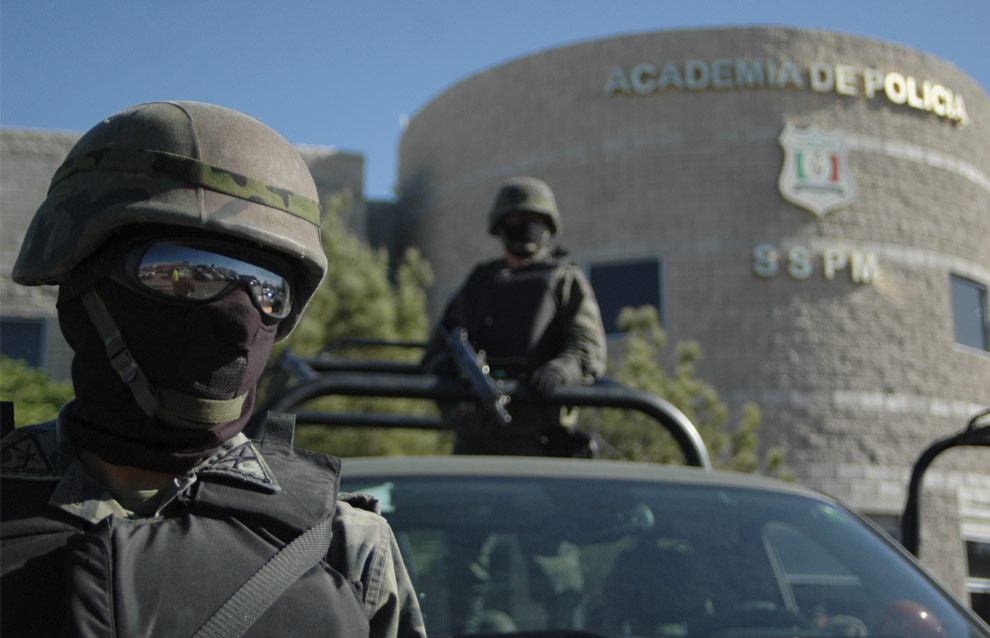
A lanky man with deep bags under his eyes sits in a cinder-block office within a heavily fortified army base. He may have the most dangerous job in Colombia. He is a top special operations commander, and he probably knows more about the drug cartels' technological prowess than anyone on the outside. He rarely gives interviews, but late one Saturday night, he agrees to discuss one of his special areas of expertise: Archangel Henao.
Lately, the commander says, he has been studying how Henao's cartel uses technology for what amounts to corporate espionage and competitive advantage against business rivals. The North Valley Cartel has waged a war against other smuggling groups over a variety of issues, including control of the port of Buenaventura. The commander recites a litany of recent assassinations and bombings. In February 2001, for instance, North Valley Cartel operatives commandeered a Bell helicopter used by the government in coca fumigation programs and pressed it into service in an attempted assassination of a rival trafficker. The rival was in jail in Cali at the time, so the hit men flew over the prison and dropped a homemade bomb containing 440 pounds of TNT. The detonator failed, but had the bomb gone off, it would have killed more than 3,000 people, the commander estimates. Within a month of that attack, the intended victim's organization retaliated with a flurry of hits --among them, a submachine-gun ambush of four North Valley Cartel figures in a Cali hospital cafeteria. (In February, Henao's brother-in-law, a top North Valley Cartel capo, was poisoned to death in a maximum-security prison.)
Many of the targets in the power struggle, the commander says, were located by signals intelligence -- things like pager and e-mail intercepts, transmitters planted on vehicles, or bugs hidden in homes and offices. "This is a technological war," he says.
Actually, it has been for a long time -- as the mysterious story of the Santacruz computer suggests. According to Carlos Alfonso Velásquez Romero, a now-retired colonel who commanded the elite unit that discovered the computer, one of the principal IT gurus behind the system was Jorge Salcedo Cabrera, a former army intelligence operative and electrical engineer who crossed over to the underworld. The Santacruz computer wasn't his first big technological splash. When the Colombian government launched the unit that Velásquez would later head, it established a toll-free tip line for information about Cali Cartel leaders. The traffickers tapped the line, with deadly consequences. "All of these anonymous callers were immediately identified, and they were killed," a former high-ranking DEA official says.
Henao's cartel built on this and other prior technology initiatives, in part by creating what amounts to a narco research and development program. One early fruit of that effort, intelligence officials say, was an advanced version of a cheap boat called a semisubmersible. Shaped like the Civil War-era Monitor, the small craft cruises below the waterline, except for a conning tower where one of its two-man crew pilots the boat. The vessel has underwater propulsion, radar, and short-band radio towers. And it's virtually invisible to even the most sophisticated spy gear. "You basically need a visual sighting to detect one, because you're not going to pick them up in a radar sweep," says Hensley, the former U.S. Customs enforcement chief.
Semisubmersibles, however, are unstable, and narcotics officials think the cartels have lost several at sea --one reason that the traffickers upgraded to submarines. According to the head of the Colombian navy, Adm. Mauricio Soto, the North Valley Cartel and other organizations have used real subs for years. Authorities believe that the Cali Cartel purchased a Soviet sub in the early '90s, and that its crew accidentally sank it off Colombia's Pacific coast during its first smuggling run, probably because they lacked the 10 skilled people needed to operate it.
More recently, the cartels have built their own subs, with help, Soto suspects, from Italian engineers who stayed in Colombia after overseeing the construction of the navy's own fleet of commando submarines two decades ago. Henao, for instance, is believed by military and intelligence officials to have a small fleet of mini-subs -- used for, among other things, hauling dope to those toxic waste freighters. So far, Colombian authorities have found only two drug subs, both of which were under construction. The most recent one, discovered 21 months ago outside Bogotá, was a 78-foot craft that cost an estimated $10 million. Intelligence sources say it belonged to Henao's North Valley Cartel. A Colombian official says Henao wanted a vessel that could carry several more tons than the Buenaventura mini-subs and travel as far as 2,000 miles -- say, to the coast of Mexico or Southern California.
Arrayed against this formidable technological arsenal is, well, not much. The commander of the narcotics agents in the Buenaventura area is a world-weary man who rarely ventures outside his military compound not far from town. He never goes into Buenaventura itself. Traffickers have put a price of 35 million pesos (about $17,000) on his head. "Life is cheap here," he mutters. He displays boxes and boxes of seized high-tech gear. Even personnel at the bottom of the cartel food chain have Israeli night-vision goggles, ICOM radio frequency scanners, and Magellan GPS handhelds.
The commander says an informant told him about mini-subs off Buenaventura months ago. But neither he nor his men have ever seen one. His outfit doesn't have the equipment to detect underwater craft.
Nor does the commander know many details about the Santacruz computer bust that first alerted officials to how technologically advanced his adversaries had become. He is unaware, for instance, of one of the biggest reasons U.S. officials want details of the system and the murders of U.S. intelligence sources it triggered kept top secret. Jorge Salcedo Cabrera, the main IT whiz who set up the Santacruz computer, eventually became an informant against cartel bosses. The DEA declined to comment on Salcedo. But according to several intelligence officials, he is now living in America at taxpayer expense, under the witness protection program.
More Reasons Why the USMIL Should Do It's Job and Take-Over the Military Problem at the SW USA Border:
1) The INS does not have the necessary personnel strength to adequately patrol the entire southern border with Mexico.
2) The INS does not have the budget allowing it to hire and train enough personnel to patrol the entire southern border with Mexico.
3) Everyday thousands of illegal aliens are crossing the U.S./Mexican border at will.
4) Everyday millions of dollars worth of illegal drugs are brought into the U.S. at will.
5) The U.S./Mexican border is a prime infiltration route for terrorist and other activities that pose a clear and present danger to the American people.
6) The vast majority of the U.S./Mexican border is in unpopulated desert and prairie lands that are only accessible by dirt roads. This does not provide for the INS to have border patrol command and control in the same way they do in more populated areas.
7) The defense of the U.S. IS THE MISSION OF THE U.S. MILITARY! When Mexican Pandit Pancho Villa crossed our border and attacked, uit was the U.S. Army that chased him away, not some pseudo-military/police outfit.
8) The U.S. Army is NOT so "over-taxed" with missions that securing her borders is beyond their abilities; include National Guard units and make them from standing around the armories on weekends to doing real world missions which require C-1 readiness
9) Performing Border Security IS warfighting in the 21st century. There is no differance between defending the U.S./Mexican border and the Serbian/Kosovo/Iraq/AFPAK border....stop lusting for a "clean" war ala WWII where the bad guys wear occult, germanic uniforms and the good guys wear clean olive drab. U.S. Army warfighting skills would improve via integration of manned observation/attack planes, helicopters, more patrolling, more small unit empowerment. Bring Heavy Brigade Combat Teams (H-BCTS) with M1s/M2s if it will assuage your fears that "Gunnery" (boo-hoo!) skills will diminish. Use their FLIR sights for surveillance.
The U.S. Military and more specifically the U.S. Army can provide the patrolling and border protection as part of normal training at no additional cost to the U.S. DOD budget. This would allow U.S. Army personnel an important opportunity to serve a direct mission for the U.S. population while training in a common world terrain.
In order to allow complete autonomy of movement along the U.S./Mexican border, permission would need to be secured through legal, congressional, and state authorities as well as the populace holding lands directly on the border. This would allow the U.S. Army to camp, patrol, and maneuver along the border freely without worry of legal retribution.
U.S. Army Border Patrol Concept:
While the state National Guard units would focus on building the sensor-security fencing, designated active-duty Army Light Infantry-based Brigades would be placed on a training rotation in accordance to the same schedule that governs JRTC or NTC. Their Delta Weapons Companies would be upgraded into Dragoon Weapons Companies by re-equipping with M113 Gavin light tracked tanks to give them overmatching cross-country mobility and long-term vehicular battery power for sensor operation:
Light mechanization will also give these L-IBCTs the superior armor protection and firepower to dominate and vanquish ANY threat that might appear from over the border. No Blackhawk Downs! here.
Once a brigade's turn comes up on the rotation, it will then mobilize the entire brigade to the distribution center. At this center, located at a railhead in the patrol zone that brigade is responsible for, the battalion is processed by a small contingent of INS border patrol agents. The U.S. Army personnel would be given classes on the legal ramifications and ROE that the INS must work under. They are issued all extra equipment need for the deployment.
The border deployment is to be treated as an opportunity to train both real world, high intensity conflict and OTW operations. The battalion will take both conspicuous patrolling and inconspicuous patrolling. This means that they will setup OP, squad level patrolling, and road blocking techniques.
All personnel in the Brigade will participate in this border patrol deployment. This includes any artillery, armor, and css personnel. All task force personnel will contribute to this mission. This is meant to include all in the deployment, and not to allow support units to stay back in garrison while infantry Battalions are deployed.
The deployed Brigades will set up ALOC operations and will handle themselves as if they are under actual real world operations. When personnel who are found to be illegal aliens are seized, they would be treated fairly as EPWs and transported back to the ALOC and command. At this time they will be processed and turned over to INS liaison agents.
The entire border should be sectioned into even patrol zones allowing only a couple of Brigades this ability. The U.S. Army combat ability should not be impeded by this action.
At the end of the designated time, the Brigade would return back to garrison and another unit from another Division would enter the deployed patrol zone.
This deployment would allow U.S. Army units the change to practice and train in patrolling, observation, and containment tactics. Due to the environment and possible bandit, cartel, and highwaymen threat, live ammunition should be carried and authorized.
PLAN B: Citizen's Wall to Seal USA Border: DIY

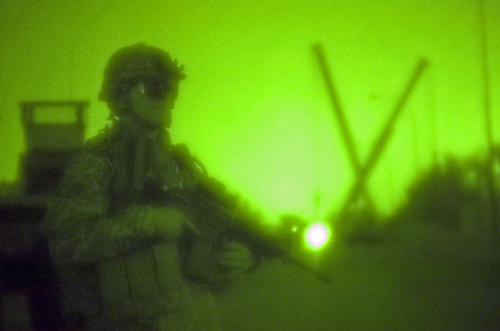
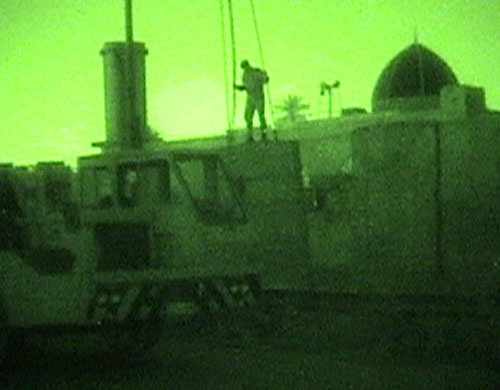
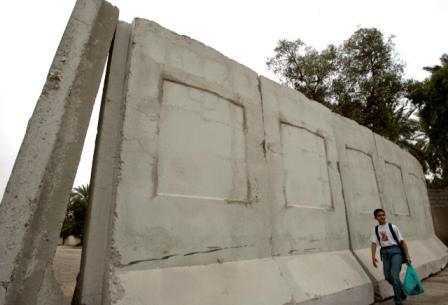
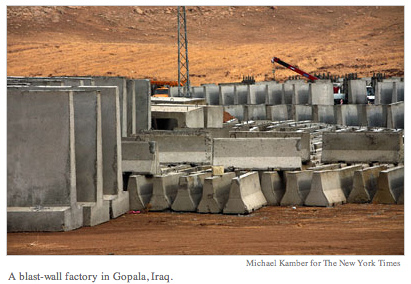

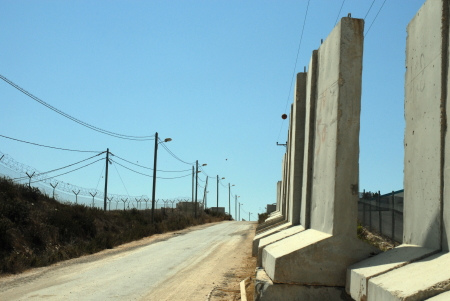
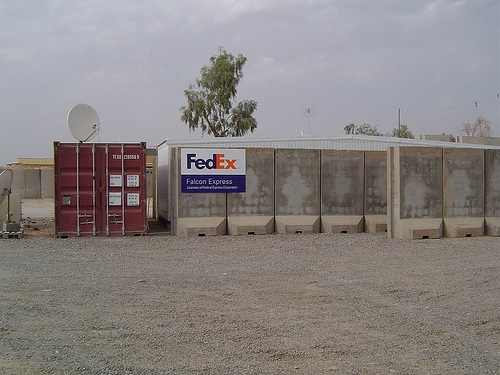

Citizen groups along the SW border of the U.S. should get their maps together and figure out who owns private property there and raise funds to place 20 foot high concrete "T" wall sections together on these citizen's property to create an actual security fence--since the corrupt U.S. Government (USG) isn't interested in doing its job of providing for our common defense--be it from criminals infiltrating here from Mexico or stopping huge amounts of oil from polluting our coasts and killing the ecology and economic system there. A large nuclear or conventional high explosives (HE) blast would seal the BP oil leak--but the USG and BP then wouldn't have a crisis to exploit any more for greed and power goals.
 www.youtube.com/watch?v=1zskDmtUnLk
www.youtube.com/watch?v=1zskDmtUnLk
Fortunately, the last I checked, Americans still have a right to defend themselves on their own property so at least the border can be secured without need of a "mother, may I?" from Uncle Sham. Similarly, Pakistan doesn't need the approval from corrupt druggie Karzai puppet of Afghanistan to build a sensor-security fence on THEIR TERRITORY on their side of the border, either.
 www.youtube.com/watch?v=LBifqu971pk
www.youtube.com/watch?v=LBifqu971pk
Walls work.
The people of Baghdad tired of USG BS to perpetuate violence there with their Halliburton-fund raising, narcissistic troop "surges" are walling off their city with "Alaska barrier" 20 foot high wall sections that they are buying at $2, 000 each--but can be produced locally for just $200 each.

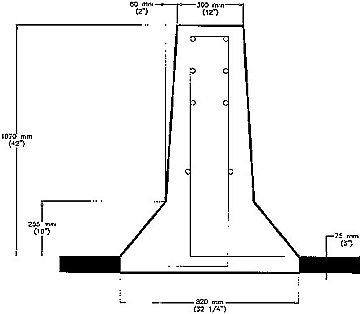

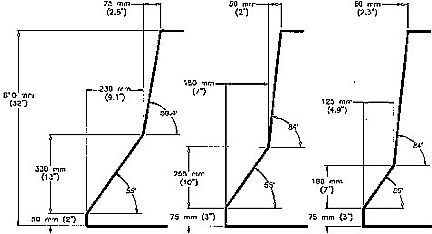
 www.youtube.com/watch?v=HHrtMkgVhk4
www.youtube.com/watch?v=HHrtMkgVhk4
Border security groups should identify patriotic contractors to do the wall sections at the lowest cost without sacrificing quality. If someone is trying to climb over your 20 foot wall, he's obviously a trespasser that can be dealt with by the citizen who can make him get back down on his side of the fence.
Thus, instead of whining to the corrupt USG to save you, it's time for WE THE PEOPLE to save ourselves--which is within our reach at a do-it-yourself (DIY) level. As the Alaska wall sections are emplaced, we should first place small culverts underneath so the wildlife can pass under them. There will obviously be stretches of border on public land that will need citizen's group pressure to be brought to bear on possibly corrupt local governments to emplace Alaska wall sections there to link up with the adjacent wall sections on private land. If we do WHAT WE CAN we can whittle this problem down to a manageable level--something we have yet to do.
-- Francis of Assisi
BUILD THE CITIZEN'S WALL!
NOTES:
T-WALL SW USA Border NOW
www.lebanonwire.com/0401/04012702DS.asp
CPA imports them at $1K each; locally made for $100. Israelis $2M/kilometer.
www.france-property-and-information.com/metric_conversion_table.htm
wiki says USA SW border is 1,969 mi = 3168 kms = $6, 336 M
http://en.wikipedia.org/wiki/Mexico_%E2%80%93_United_States_border
borderfenceproject.com says 1952mi
www.borderfenceproject.com/
$6.4B seals off the SW USA border. Problem solved.
http://en.wikipedia.org/wiki/Bremer_wall
Bremer wall
From Wikipedia, the free encyclopedia
A Bremer wall is a twelve-foot-high (3.7 m) portable, steel-reinforced concrete wall of the type used for blast protection throughout Iraq and Afghanistan. The name is believed to have originated from L. Paul Bremer of the Coalition Provisional Authority, who was the Director of Reconstruction and Humanitarian Assistance for post-war Iraq following the Iraq War of 2003 in the early years of the Iraq War.[1]
The Bremer barrier resembles the smaller 3-foot (1 m) tall Jersey barrier, which is used widely for vehicle traffic control on coalition military bases in Iraq and Afghanistan. To indicate that the Bremer barrier is similar but larger, the 12-foot (3.7 m) tall intermediate-sized Bremer barriers are usually referred to as Texas barriers (but not to be confused with the 3-1/2 foot (1.1 m) Texas constant slope barrier). By this same naming convention, the largest barriers, which stand around 6 metres (20 ft) tall, are called Alaska Barriers. Unlike the Jersey barrier which has sloped-sides at the base, the Texas and Alaska barriers have a rectangular ledge (usable as a bench for sitting or resting) which is approximately knee high for a typical adult.
Alaska barriers are typically used as perimeter fortifications of well-established bases in Iraq and Afghanistan.[2]
These T-shaped walls were originally developed by the Israelis in the Israeli West Bank barrier. The term "T-wall" is commonly used by soldiers throughout Iraq and Afghanistan, due to their shape being similar to an inverted T when viewed from the side.
References
^ Andrew Butters (January 27, 2004), "Iraqi firms suspicious, confused by new economy: Securing U.S. contracts proves difficult", The Daily Star,
www.lebanonwire.com/0401/04012702DS.asp
^ Joseph Giordono, and Monte Morin (April 19, 2007), "Soldiers building wall separating Sunnis, Shiites: Three-mile structure in Baghdad is a disputed part of security plan", Stars and Stripes Mideast edition,
www.stripes.com/article.asp?section=104&article=52775&archive=true
External links
In the Business of Blast Walls, Saturday, April 05, 2008. Includes many photos.
FEEDBACK!
A patriot writes in:
"Support for such is a third rail for congress as this could have negative consequences with regard to NAFTA and US/Mex trade in general. For more on the subject read the books by Michael Levine. Michael was one of the DEA's most highly decorated agents. He retired in disgust after one of his biggest busts was pushed aside by DOJ and other higher ups within the DEA. The bust was going to implicate many in the Mexican government as well as other key players within Columbia. The bust was to happen very shortly before the NAFTA vote. The rest is history and Mr. Levine would now like to see the drug war end by shutting down the enforcement agencies.
I know you all have mixed opinions regarding that subject but the way I see it the drug war has been increasingly used to fleece US citizens out of their tax money, assets through illegal search and seizure and of course we now have a much diminished Bill of Rights, all in the name of the drug war...."
Levine on Amazon.com:
